Your computer’s random access memory (RAM) modules are critical to the PC’s performance. If your RAM is too slow or you don’t have enough of it, you won’t be able to run the programs you need. For the past ten years, most PCs have run with DDR4 RAM, which can reach speeds of 5000MHz or more and support up to 128GB of memory with the right motherboard. DDR5 RAM launched in 2021, but it’s hit the mainstream in the past six months thanks to Intel’s new 12th generation chips and AMD’s Ryzen 6000-series mobile processors that natively support it.
Compared to DDR4, DDR5 RAM has a higher base speed, supports higher-capacity DIMM modules (also called RAM sticks), and consumes less power for the same performance specs as DDR4. However, DDR4 still holds some key advantages, like overall lower latency and better stability. Most new PCs still ship with DDR4 memory, but is it worth the extra cash to get something with DDR5 memory, instead?
Clock speed and data rate
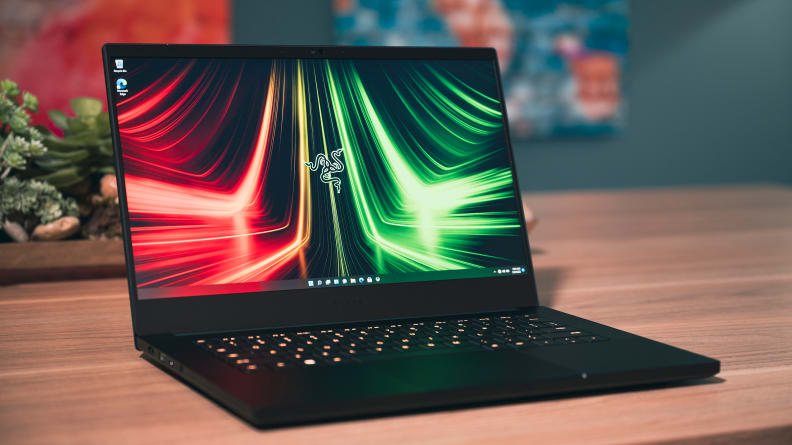
Credit: Reviewed / Jackson Ruckar
Some recently released high-end gaming laptops already have DDR5 RAM installed.
Currently, the standard default clock speed (or how many times the RAM modules can access its memory) for DDR4 is 2133MHz, whereas the default rate for DDR5 is 4800MHz. To run RAM faster than these speeds, you may have to enable the XMP profile in your PC’s BIOS if it’s not already enabled, but either way, DDR4 cannot reach the high speeds than DDR5 can.
Another of DDR5’s key improvements over DDR4 is its data transfer rate. For Intel’s 12th generation of processors, DDR4 will run at speeds up to 3200 Megatransfers per second (MT/s), and DDR5 will run up to 4800 MT/s. This means DDR5 transfers data at up to 38.4 Gigabytes per second (GB/s), while DDR4 tops out at 25.6 GB/s—50% faster than DDR4’s maximum data rate.
Our pick: DDR5
Memory Capacity
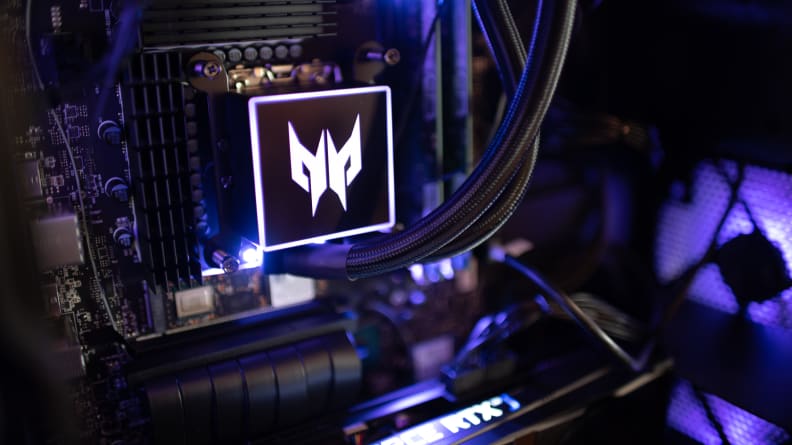
Credit: Reviewed / Adrien Ramirez
Your processor, storage drive and graphics card will have a more notable impact on your PC’s performance than your RAM speed.
While DDR4 tops out at 64GB per module (RAM stick), DDR5 can top out at a whopping 256GB per module. Generally, most processors can support up to 128GB of DDR4 memory split across two to four DIMM modules. DDR5 is in its infancy, so it is reasonable to expect that future consumer CPUs will support 256GB or more max capacity for DDR5. For now, Intel’s 12th generation Core processors and AMD’s mobile 6000-series processors are the only currently available mainstream CPUs to support DDR5 memory at the time of writing, and they support up to 128GB of DDR5 memory total. However, AMD plans to release a new line of DDR5-compatible desktop processors later this year.
Our pick: Tie (for now)
Latency

Credit: Reviewed / Jackson Ruckar
DDR4 still offers the better value when you compare DDR5’s marginal performance gains to its notable price hike over DDR4 memory.
DDR4’s major advantage over DDR5 is its lower latency. Basically, RAM acts like temporary storage for your computer’s CPU so it can quickly access tasks it performs on a regular basis. (Keeping a dozen Google Chrome tabs simultaneously open is a great example of this.) The lower the latency, the faster the CPU can access the instructions it temporarily stored in the RAM to perform the tasks.
Total latency is determined by both a DIMM module’s speed and its CAS (Column Address Signal) latency. If you have a DDR4-3200 CL20 module, for instance, that CL20 number is its CAS latency rating. (Lower numbers are better.) Most DDR5 modules have CL40 CAS latency, which negates DDR5’s high clock speeds; It’s faster at completing tasks, but it takes longer for the RAM to register it needs to perform a task. So, that DDR4-3200 CL20 RAM will have snappier performance than a DDR5-4800 CL40 module.
(G.Skill, for instance, announced the first DDR5 kit to hit sub-30 CAS latency only two months ago, but it will be a while before DDR5 kits manage to clip the CAS latency to levels compete with DDR4 kits.)
Our pick: DDR4
Performance
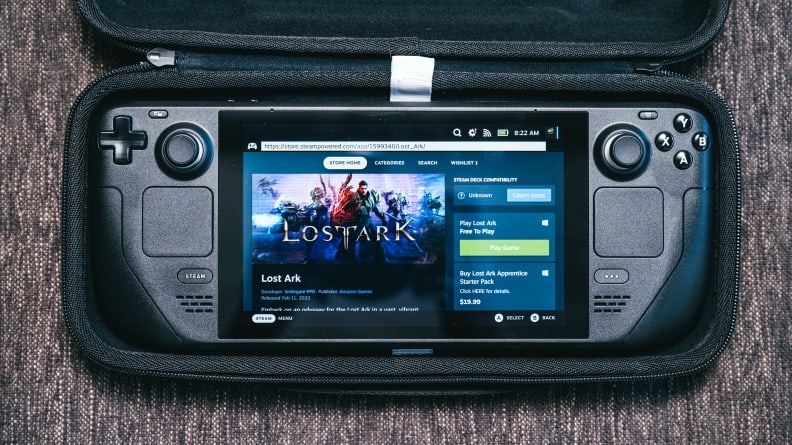
Credit: Reviewed / Jackson Ruckar
Modern gaming consoles will sport DDR4 RAM for a while.
Better specs are great and all, but they won’t matter if DDR5 modules can’t outperform the best DDR4 modules. Because of DDR5’s high latencies, its performance is not notably better than DDR4 modules. When we ran DDR4 and DDR5 kits on our benchmark desktops, the performance differences were small. For some workloads, like scene rendering with Cinebench and Blender or video file encoding with Handbrake, the DDR5 system saw modest gains over the DDR4 system. The same scene rendered in Blender, for instance, was one to two minutes faster on the DDR5-equipped system, and the same video file encoded in Handbrake was also about a minute faster on the DDR5-equipped system.
However, other workloads like gaming saw little to no performance differences. Our AMD Radeon-based graphics benchmark systems showed the same framerate performance across our reference games on both the Ryzen 9-5950X / DDR4 RAM and Intel Core i9-12900K / DDR5 RAM desktops. Meanwhile, our Nvidia-based graphics benchmarks systems actually showed worse performance on our Intel Core i9-12900K / DDR5 RAM desktop compared to our Intel Core i9-11900K / DDR4 RAM desktop, with some games running up to 20fps slower on the DDR5-equipped system.
Our benchmarks and testing across prebuilt desktop and laptop PCs echo the same results. When we compare DDR5-equipped PCs to similar DDR4-equipped ones, there are little to no performance gains in games.
Over time, we expect this comparison to still hold true; Gaming and productivity tasks are rarely bottlenecked by RAM performance or latency—RAM capacity and bandwidth are far more important for those things. Similarly, more specialized tasks, like file compression or multitasked video and photo editing, can be sped up with more powerful RAM, but you will see better gains from upgrading the storage drive, CPU, or GPU.
Our pick: Tie
Compatibility
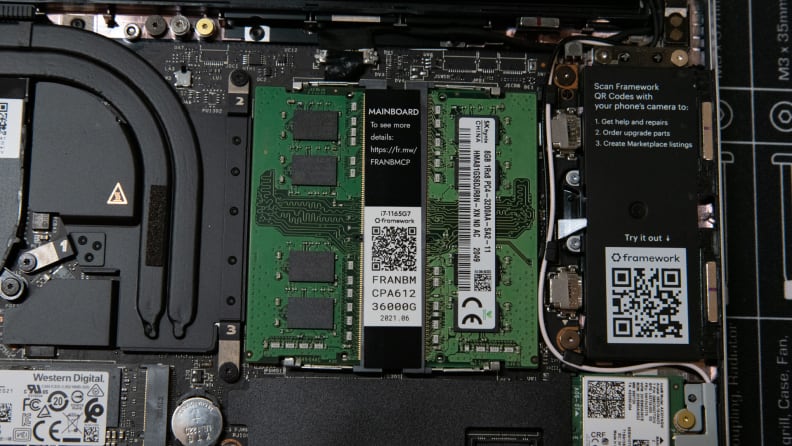
Credit: Reviewed / Adrien Ramirez
The Framework laptop mainboard has RAM slots so you can upgrade your memory later on.
Currently, DDR5 modules are only supported by Intel’s 12th gen processors and AMD’s 6000-series mobile processors.
Most processors and motherboards made in the last decade support DDR4 RAM—including Intel’s 12th-gen processors. When Intel’s 13th-gen desktop processors launch sometime later this year, they will support both DDR4 and DDR5 memory. There is no indication that Intel’s 14th or 15th generation processors will support DDR4, but those chips are expected to release sometime in late 2023 or later.
AMD’s upcoming 7000-series processors, releasing sometime later in 2022, will only support DDR5 memory.
Our pick: DDR4
Price
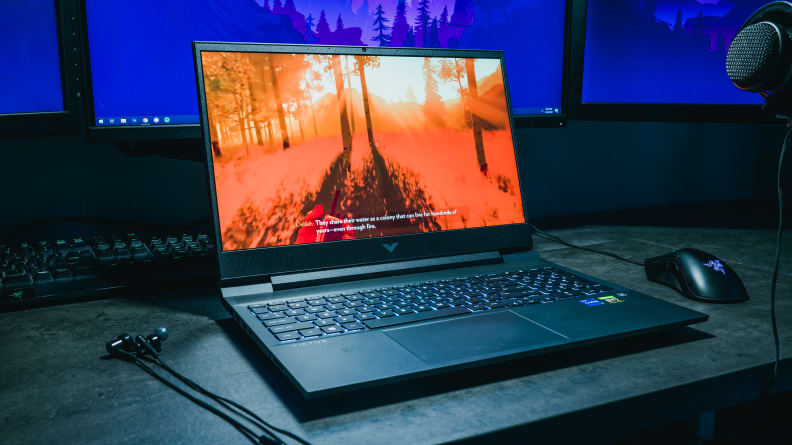
Credit: Reviewed / Jackson Ruckar
Most laptops and desktops—even those with current gen processors—still ship with DDR4 RAM.
DDR4 RAM has been around for a decade, so expect to pay two to three times its current cost if you want a DDR5 kit. For instance, this 32GB (2 x 16GB) DDR4-3600 CL18 G.Skill Trident kit costs $133, whereas this 32GB (2 x 16GB) DDR5-6000 CL 36 G.Skill Trident kit costs $340—that’s over two and a half times more expensive for a DDR5 kit from the same line of products.
DDR5-compatible motherboards are also more expensive than DDR4-only ones. This Asus ROG Strix Z690 motherboard, for example, is over $100 more than its Z590 counterpart. The early adopter tax is real, and if you wait even six months to a year, prices will almost certainly go down on both DDR5 kits and DDR5-compatible parts. On the other hand, DDR4 kits and compatible parts will also grow cheaper as DDR5 slowly becomes more mainstream, making it even more attractive from a price point.
Our pick: DDR4
Should you upgrade to DDR5?
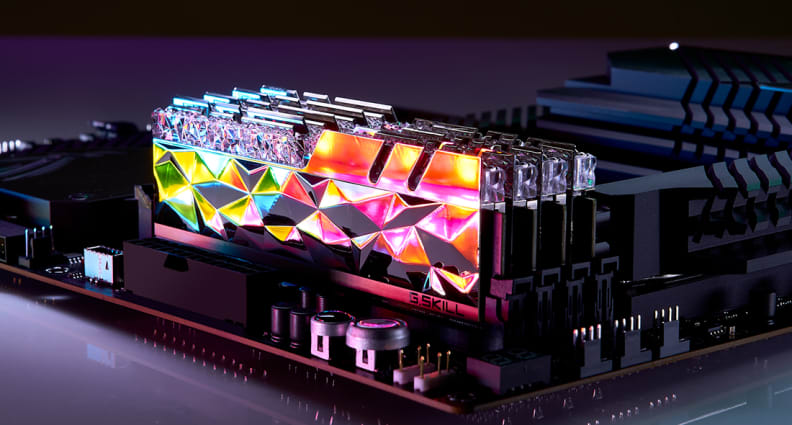
Credit: G.Skill
While DDR5 has greater data transfer rates, the best DDR4 modules still have lower latency.
Considering how long DDR3 stayed relevant while DDR4 was mainstream, it will be two to three years—at the very earliest—before you’ll need to upgrade to DDR5 from a compatibility and support standpoint. DDR5 is undeniably an improvement over DDR4 when it comes to memory bandwidth and capacity, but its modest performance gains over DDR4 in most nonprofessional tasks and its high latencies sour the deal.
When you add in the exorbitant price difference, it makes little sense to choose a DDR5 kit for a PC unless you plan to use it for specific demanding tasks, like mass file compression or photo and video editing. Even if you want to future-proof your PC as much as possible, you will be better off letting the technology develop for a couple of years before jumping for a DDR5 kit.
In the meantime, take advantage of the great DDR4 kits on the market today and don’t let FOMO get to you.
The product experts at Reviewed have all your shopping needs covered. Follow Reviewed on Facebook, Twitter, Instagram, TikTok, or Flipboard for the latest deals, product reviews, and more.
Prices were accurate at the time this article was published but may change over time.

